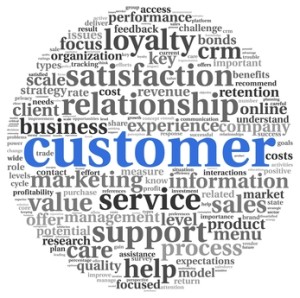 Every leader at every level in every organization needs to think about Customer Service. Whether you lead a team that is talking to paying Customers every day, supporting those that do, or just interacting with internal Customers, the need for Customer Service skills –and a Customer orientation is critical. When this subject comes up when training or coaching leaders, here is the most common question I get – “How can I convince my people to give better Customer Service?”
Every leader at every level in every organization needs to think about Customer Service. Whether you lead a team that is talking to paying Customers every day, supporting those that do, or just interacting with internal Customers, the need for Customer Service skills –and a Customer orientation is critical. When this subject comes up when training or coaching leaders, here is the most common question I get – “How can I convince my people to give better Customer Service?”
The answer may not be as hard as you think.
Your people have to genuinely like people.
If they don’t like people (or the people who are their Customers), it is going to be much harder to influence them to deliver better Customer Service.
We all know that some folks are more people focused than others. That doesn’t mean the other people are bad in any way, it just means that their first focus might not be people. So why don’t we put those people in positions to interact with Customers?
Does that mean we should do a DISC or other personality assessment and make hiring decisions based on it in a black and white fashion 100% of the time? Does that mean we need to fire (or move) part of our existing team because they don’t meet these criteria?
No, but these questions are worth considering.
People who need to interact with other people, especially in stressful situations, will do better if their first preference is people vs. task.
So, that is a summary of “Hiring for Customer Service 101” in one sentence.
But what about your existing team, you ask?
I’ll give you three things (from a long list) that you can do to help your existing team.
Help them personalize the Customer. When people see the Customer as John or Gina or Rajesh, it is easier for them to work harder to provide great service. No one likes to be a number or be treated like one. And it is harder to do that to someone else when there is a name and a personality that they are talking to. How do you do this? Invest time and money for your people to meet and build at least some relationships with real Customers.
Put People in the Customer’s Shoes. Beyond personalizing the Customer, you can also internalize the experience. If your people could be Customers of your product, help them experience it. If not, find ways to talk about how they feel as a Customer of anything, and how that translates to the specific service they provide.
Describe what you mean by “better Customer Service”. Do people really know what you expect from them in terms of Customer Service? Don’t say, “they should” or “they ought to,” do they know? If not, it is time for real conversation and dialogue about what the picture looks like to you – so they can paint that picture. No one can meet expectations if they don’t know what the expectations are. Do your folks know what your Customers expect? Do they know what you expect? (let’s hope those two lists are in close alignment).
Great Customer service isn’t such a big leap when you begin to consider these things – and when you get these things right, it will improve not only Customer service, but also Customer relationships, as well as increase job satisfaction.

I have learned a lot thank you and keep it up